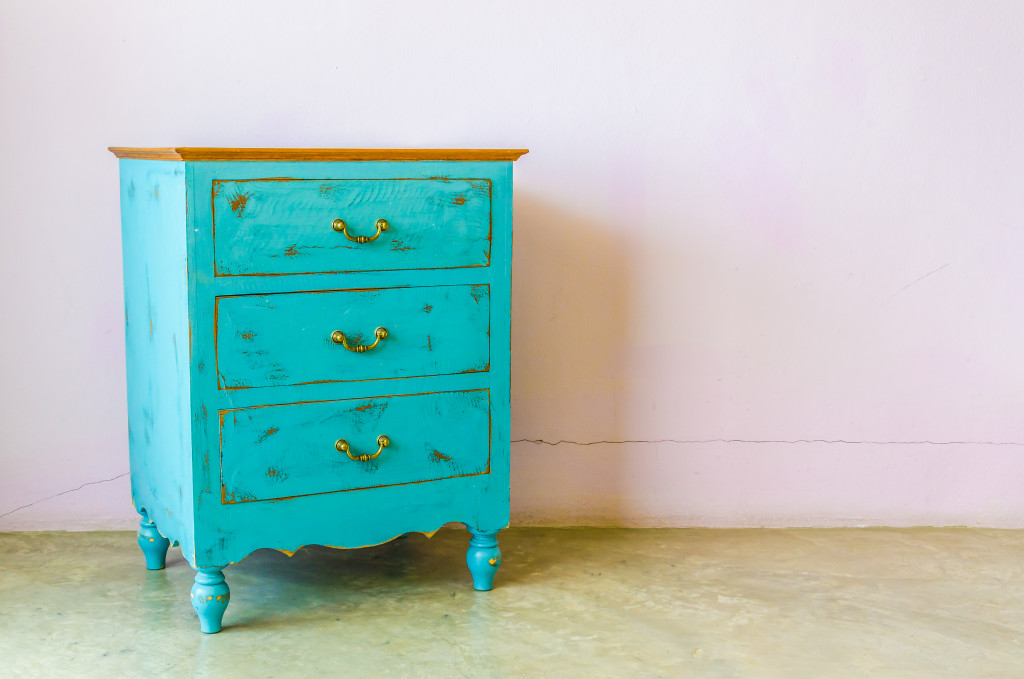In interior design, “retro-style” refers to styles from the mid-century to the 70s, with the 1980s increasingly being included. Retro style may range from adding a few objects to recreating a typical vintage house interior from a certain historical period. Aside from these various applications, certain vintage styles have gotten a little bit “out there” in terms of color and material use.
As a result, retro design is not for people who like a more subdued and traditional décor. Adopting a vintage aesthetic demonstrates that you put thought into building your house and haven’t just failed to update or switch up your décor over time. Of course, if you’re talking to a mortgage lender specifically for a vintage property or are actively looking to give your house that old and nostalgic feel, then retro-flying your home is definitely for you.
Get Organic Wood Rattan Furnitures
Although it gained popularity in the 1960s and 1970s, rattan furniture is created using an ancient weaving process. The light, carefree look is still popular today, and rattan and wicker furniture are still highly sought after. They are the right materials for adding a sense of depth and texture and fun to the sharpness that has recently dominated modern architecture and construction. These items may be readily incorporated into a range of décor styles to create a modern or antique setting. Incorporate rattan or wicker into your décor with eye-catching accent pieces like a vintage rattan side table or a hanging egg chair, both popular in the 1970s.
Go for Retro-styled Accents for Furniture and Flooring
When it comes to accents and accessories for vintage-style décor, the sky is the limit. Fuzzy throw pillows, beads and seashells hanging by a door frame, lava lamps, weird coffee tables, and doilies on furniture are examples of retro décor. Art pieces, be they paintings or sculptures, are often bold and unique, leaning toward abstract pieces rather than still-lifes or classic landscapes. But when it comes to flooring, There are just three options when it comes to retro-style décor: either natural wood (like planks or tiles), checkerboard tile pattern or thick rugs like shag carpets.
Use Old and Vintage Furniture and Appliances to Complete the Retro Feel

Genuine antique furniture and vintage designs are in high demand, so if you have a pair collecting dust in your cellar or attic, now is the time to clean them up and incorporate them into your new interior design plan. The furniture of a specific era had a particular appearance. Natural materials, such as wood or even metal, were used to make furniture and appliances. Permanent furniture such as tables, chairs, desks, side tables, and cupboards was spacious and designed with complex and intricate patterns. These designs stood out and barely required any more embellishments or additions. Chairs, for example, are lightweight with sturdy and long-lasting thin legs. Including these types of items and furniture in your modern home will give it a vintage feel.
Use Real Paintings Instead of Print
Because prints were not available at the time, machine-made art has a mechanical feel to it. Whether you are conscious of it or not, seeing the texture of brush strokes registers in your brain. It could be because every artist instills a soul in their work, transferring a subconscious design quirk in their works. A certain brush stroke can give a portrait a very distinct look, and the characteristic use of colors makes a piece unique. Whether you like modern or abstract, a piece with organic and human qualities will contribute to your home’s distinct vintage and retro vibe.
Don’t Forget the Floral Wallpaper
Nothing screams “retro,” “vintage,” or even “nostalgic” as much as chintz- whether you grew up with it or not is a different discussion. And it’s slowly making its way back to popularity. Chintz’s renaissance isn’t confined to fabric; flower patterns of all types make a comeback as trendy wallpaper alternatives. More people resort to wallpaper, especially the peel-and-stick variety, to personalize their homes.
Retro decorating is all about merging different styles from different eras and colors, shapes, and textures to create a design that is as one-of-a-kind, just like the era that inspired it. Vintage furniture is also strong, long-lasting, and entirely functional. Everything is functional and ergonomic. Creating a functioning vintage style décor necessitates paying close attention to every aspect. The essential thing to remember while decorating in the retro style is to let go of any inhibitions you may harbor about combining colors and shapes. Don’t even bother trying to make a retro-style décor look more subdued- retro is all about being unique and standing out.